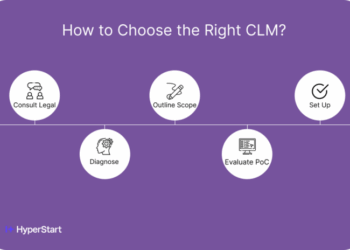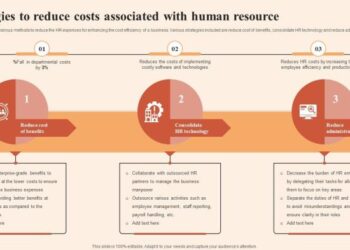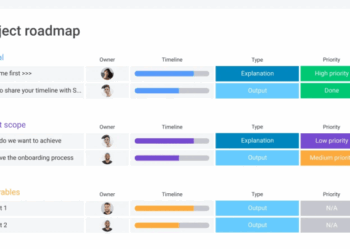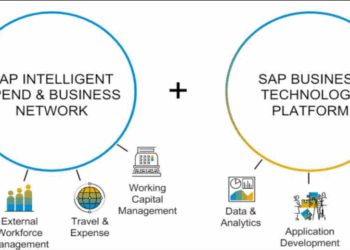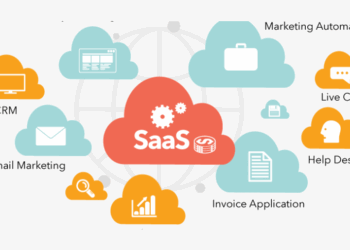As Integrating Business Workflow Systems with Cloud Solutions takes center stage, this opening passage beckons readers with a captivating glimpse into the world of efficient business processes and advanced technology.
In today's fast-paced digital landscape, the fusion of business workflow systems and cloud solutions offers a transformative approach to optimizing organizational workflows and boosting productivity.
Understanding Business Workflow Systems
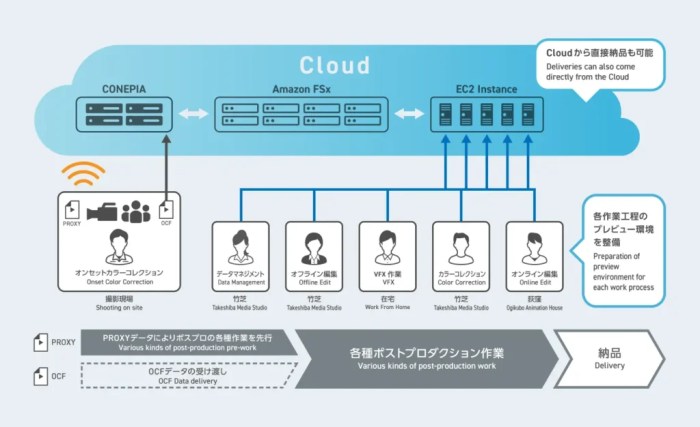
Business workflow systems are tools designed to streamline and automate the flow of tasks, information, and documents within an organization. These systems help in defining, managing, and executing business processes efficiently.
Key Components of a Business Workflow System
- Workflow Design: This involves mapping out the sequence of activities and decision points in a business process.
- Automation: The system automates repetitive tasks, reducing manual intervention and minimizing errors.
- Integration: Business workflow systems can integrate with other software applications and systems used within the organization.
- Monitoring and Reporting: These systems allow for real-time monitoring of processes and generate reports for analysis and optimization.
Benefits of Using a Business Workflow System
- Improved Efficiency: By automating tasks and standardizing processes, workflow systems help in increasing operational efficiency.
- Enhanced Collaboration: These systems facilitate better communication and collaboration among team members by providing a clear overview of tasks and responsibilities.
- Cost Savings: By reducing manual errors, streamlining processes, and eliminating paper-based workflows, organizations can achieve cost savings.
- Compliance and Accountability: Business workflow systems ensure that processes are followed consistently, enhancing compliance with regulations and accountability within the organization.
Implementing Cloud Solutions in Business Operations
Cloud solutions have revolutionized the way businesses operate by offering a wide range of benefits that enhance efficiency, scalability, and cost-effectiveness. By transitioning to cloud-based systems, organizations can streamline their processes, improve collaboration, and adapt to changing market demands more effectively.
Advantages of Integrating Cloud Solutions
- Scalability: Cloud solutions allow businesses to easily scale their operations up or down based on demand, without the need for significant infrastructure investments.
- Cost Savings: By eliminating the need for on-premises hardware and maintenance costs, cloud solutions offer a more cost-effective alternative for businesses of all sizes.
- Improved Collaboration: Cloud-based systems enable real-time collaboration among employees, regardless of their location, leading to increased productivity and efficiency.
- Enhanced Security: Cloud providers often offer robust security measures to protect data, reducing the risk of data breaches and ensuring compliance with regulations.
Popular Cloud Solutions in Various Industries
- Amazon Web Services (AWS): Widely used in the tech industry for its extensive range of cloud services, including computing power, storage, and databases.
- Microsoft Azure: Known for its integration with Microsoft products and services, Azure is popular among businesses looking for a seamless cloud solution.
- Salesforce: A leading customer relationship management (CRM) platform used by businesses across industries to manage customer interactions and sales processes.
- Google Workspace: Formerly known as G Suite, Google Workspace offers a suite of cloud-based productivity tools for collaboration and communication.
Challenges Organizations May Face When Transitioning to Cloud Solutions
- Data Security Concerns: Organizations may worry about the security of their data stored in the cloud, especially when it comes to sensitive information.
- Integration Complexity: Migrating existing systems and data to the cloud can be complex and time-consuming, requiring careful planning and execution.
- Compliance Issues: Businesses operating in regulated industries may face challenges ensuring compliance with industry-specific regulations when using cloud solutions.
- Dependency on Internet Connectivity: Cloud-based systems rely on internet connectivity, which can be a challenge in areas with unreliable or slow internet connections.
Integration Strategies for Business Workflow Systems and Cloud Solutions
When it comes to aligning business workflow systems with cloud solutions, there are various integration strategies that organizations can consider. These strategies play a crucial role in ensuring a seamless transition and efficient utilization of cloud platforms within the existing workflow systems.
1. Point-to-Point Integration
Point-to-Point Integration involves connecting specific components of the business workflow system directly to corresponding components in the cloud solution. This strategy is straightforward and can be effective for simple integrations. However, it can become complex and challenging to manage as the number of connections increases.
2. Middleware Integration
Middleware Integration utilizes a middleware layer to facilitate communication between the business workflow system and cloud solution. This approach helps in managing multiple connections, providing a centralized platform for data transformation, synchronization, and routing. Middleware integration offers flexibility and scalability, making it suitable for complex integration scenarios.
3. API Integration
API Integration involves leveraging application programming interfaces (APIs) provided by cloud solutions to connect and interact with the business workflow system
Best Practices for Seamless Integration
- Define clear integration objectives and requirements before implementing any integration strategy.
- Ensure compatibility between the business workflow system and cloud solution to avoid data inconsistencies or interoperability issues.
- Implement robust security measures to safeguard data during integration processes and data exchanges.
- Regularly monitor and test integrations to identify and address any performance issues or bottlenecks.
- Engage key stakeholders and IT teams throughout the integration process to ensure alignment with business goals and objectives.
Security Considerations in Integrating Business Workflow Systems with Cloud Solutions
Data security is a critical aspect when integrating business workflow systems with cloud solutions. With sensitive information being transferred and stored in the cloud, it is essential to ensure that proper security measures are in place to protect the data from unauthorized access, breaches, or other security threats.
Potential Security Risks and Mitigation Strategies
- Unauthorized Access: Implement strong authentication methods such as multi-factor authentication to prevent unauthorized users from gaining access to sensitive data.
- Data Breaches: Encrypt data both in transit and at rest to protect it from being intercepted or compromised. Regularly monitor and audit access logs to detect any unusual activity.
- Data Loss: Regularly back up data to prevent data loss in case of system failures or cyber attacks. Utilize redundant storage systems to ensure data availability.
- Malware and Phishing Attacks: Educate employees on cybersecurity best practices to prevent malware infections and phishing attempts. Implement security software to detect and mitigate these threats.
Compliance Requirements for Data Security in Cloud-Based Systems
- GDPR Compliance: Ensure that data stored in the cloud complies with the General Data Protection Regulation (GDPR) by implementing proper data protection measures and obtaining user consent for data processing.
- Industry-Specific Regulations: Adhere to industry-specific regulations such as HIPAA for healthcare data or PCI DSS for payment card information to maintain compliance and protect sensitive data.
- Data Residency Requirements: Be aware of data residency laws that dictate where data can be stored and processed to avoid legal implications. Choose cloud providers with data centers in compliant regions.
Scalability and Flexibility Benefits
Integrating business workflow systems with cloud solutions offers significant scalability and flexibility benefits, enabling organizations to adapt to changing business needs and requirements more effectively.
Enhanced Scalability
Cloud solutions provide organizations with the ability to scale their resources up or down based on demand. This scalability feature allows companies to easily expand their operations during peak periods without the need for significant upfront investments in infrastructure. For example, a retail company can quickly increase its server capacity during holiday seasons to handle higher website traffic and transaction volumes, ensuring a seamless customer experience.
Utilizing Scalability in Business Operations
- By leveraging cloud-based infrastructure, organizations can easily add or remove computing resources as needed, ensuring optimal performance and cost-efficiency.
- Scalability enables businesses to respond quickly to changing market conditions, such as sudden spikes in demand or unexpected growth opportunities.
- Companies can avoid over-provisioning resources by dynamically adjusting their capacity based on real-time data and usage patterns.
Enhanced Flexibility with Cloud Solutions
Cloud solutions offer enhanced flexibility for business workflow systems by providing access to resources and applications from any location with an internet connection. This flexibility allows employees to collaborate more effectively, work remotely, and access critical data and tools on the go.
Benefits of Flexibility in Business Operations
- Remote access to cloud-based systems enables employees to work from anywhere, increasing productivity and reducing operational costs.
- Flexibility in cloud solutions allows organizations to quickly deploy new applications and services, enabling faster innovation and adaptation to changing market trends.
- Business workflow systems integrated with cloud solutions can easily accommodate changes in business processes or requirements, ensuring agility and responsiveness to evolving business needs.
Concluding Remarks

In conclusion, the integration of business workflow systems with cloud solutions presents a promising path towards enhanced efficiency, scalability, and security in modern enterprises. By leveraging the power of cloud technology, businesses can adapt to changing demands and drive growth in a dynamic marketplace.
Commonly Asked Questions
How can business workflow systems benefit from cloud solutions?
Business workflow systems can benefit from cloud solutions by gaining access to scalable infrastructure, improved collaboration capabilities, and enhanced data security measures that are built into cloud platforms.
What are some common challenges when integrating business workflow systems with cloud solutions?
Common challenges include data migration issues, compatibility concerns between different systems, and ensuring seamless connectivity between on-premises and cloud-based solutions.
How do cloud solutions contribute to the flexibility of business workflow systems?
Cloud solutions offer businesses the flexibility to scale resources up or down based on demand, enable remote access to workflow systems, and facilitate real-time collaboration among team members regardless of their physical location.


